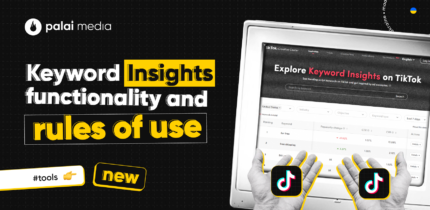What is Header Bidding or рow to earn more ifyou’re a gambling publisher?

In 2024, the gambling scene is more like a battle royale than a competitive environment where
everyone can grow bit by bit. Strict state regulations, both in Ukraine and in the West, reduce
the chances of publishers doing business adequately in an already monopolized and very
complex vertical.
Due to these facts, it is natural for website and app owners to start looking for ways of
distributing their traffic more efficiently. Some establish connections with ad networks, some go
vendor to vendor searching for an ideal ad tech partner, and some just use header bidding.
Today, we will discuss the logic behind choosing the latter, as well as the header bidding
technology in general.
What is Header Bidding?
Header bidding (or pre-bidding) is a technology that allows publishers to offer ad inventory to
their programmatic partners before traditionally selling it directly.
Complicated? Let’s get into the details.
The main idea is to have more sources of demand and thus get the highest bids for your
placements. Although header bidding was originally created to combat the limitations of
Doubleclick for Publishers, it accidentally became an objectively superior alternative to
traditional waterfalling.
What is this waterfalling? This is when there is a hierarchy of inventory in ad sales requests.
Initially, your placement is offered to one set of buyers (premium buyers in direct or ad
exchange in programmatic). If the deal does not happen, it is offered to another, and so on, until
you get the desired eCPM, or the sale simply fails.
Header bidding simplifies and optimizes this scheme to send a request at once to all elements
of your ad tech system, which could potentially buy your traffic.
How does Header Bidding work?
Ad tech is never easy, but let’s dissect everything step by step. In essence, the engine of the
whole process is the prebid adapter, which is based on a free, open-source JavaScript library.
In order to use it:
- Your header bidding vendor (such as Google Ad Manager or Index Exchange) must provide
you with a js code – wrapper (container or framework) that goes to the <head> section of your
website. - Your ad tech providers must support this prebid adapter. It’s easy to check; they should be
added to this list.
When these conditions are met, the supported demand sources (i.e., ad exchanges, DSPs
connected to your SSP, as well as ad networks) will be able to place their bids on your
inventory. The best thing about the whole process is that this framework is relatively easy to
implement, the main requirement is vendor’s support.
Cool? Cool, but that’s not all. In reality, the implementation of header bidding varies. Meaning
that there are three types of HB containers:
- Client-side
When the user’s browser sends requests parallel to how the page loads. The partners place
bets, the software selects the winner and transmits the information to your ad server. The point
is that all the “load” is taken over by the browser.
This is easy to implement, but it is obvious that a large number of ad requests negatively affects
the page load time. - Server-side
In short, instead of a browser, a separate server is responsible for solving all requests and determining the winning bet. This reduces page loading time but, at the same time requires separate costs for creating such a solution. - Hybrid solution
This is a very rare setup that combines both options above. The point is in the optimal redistribution of the load with a large number of partners.
Why use Header Bidding?
Even though you’re a publisher in a very specific betting ad vertical, you’re likely facing the
same challenges as your colleagues in other fields. Header bidding helps:
- To easily add demand sources for selling ad placements
The more sources, the more opportunities for someone to buy your inventory at the desired
price. As a result, you get a higher eCPM. Some publishers even claim that just + 1 additional
source = + 10% to sales efficiency; - To solve the problem of low demand
Since the government and Google limit/ruin the betting sphere year by year, fewer brands consider buying ad placements on gambling resources appropriate. With header bidding, the publisher has more sources and more opportunities to sell to those who are really interested in it without compromising on price; - Fix Google DFP issues
At first glance, this is a rare case, but in fact, many publishers use Doubleclick for Publishers’ ad server. Unfortunately, Google’s product (surprise) favors the bids from Google’s ad exchange. As a consequence, higher bids from other platforms that should potentially bring pubs more earnings are ignored;
Why shouldn’t you use Header Bidding?
Despite the apparent benefits, we cannot talk about potential disadvantages:
- Header bidding is not completely free
Yes, the framework itself is free, but both partnering with a vendor and setting up programmatic
connections require finance. Plus, you are most likely not an HTML developer, so you need dev
resources for competent implementation; - Long page load time
Unlike the point above, this is an actual disadvantage! Long load times are especially true for client-side implementation. The situation is better on the server side, but firstly, the server costs money, and secondly, it’s not that much better because bid requests from various sources have delays, and there’s nothing you can do about it.
Do you always need Header Bidding?
In general, if we believe the Header Bidding survey (a media resource of the same name, not a
technology), then by 2022, 66% of publishers, including those in the publishing sector, were
already using this technology.
The main reason for such popularity is the higher eCPM obtained, and the main reason as to
why the other 34% aren’t on board is a banal misunderstanding of how to work with it.
However, if you own a mobile betting resource, you most likely are asking: “What the hell is
mobile header bidding if mobile apps don’t even have headers?”
In fact, header bidding (like many things in advertising) is more about the idea of optimizing
traffic in a certain way rather than strictly following the implementation via js.
Conventional Google AdMob and Facebook actually do this for their mobile publishers, even
calling it header bidding, although it technically isn’t. Epom does the exact same thing, allowing
publishers to prioritize programmatic demand and lower direct demand while still receiving bids
simultaneously.
Overall, we hope this little tutorial will help you feel like a better betting advertiser. Do not forget
to try our ad server; instead of dancing with a tambourine and looking for guides like this, our
team of specialists will explain and set up everything for you. Good luck!







Reviews (0)
No reviews have been added yet!